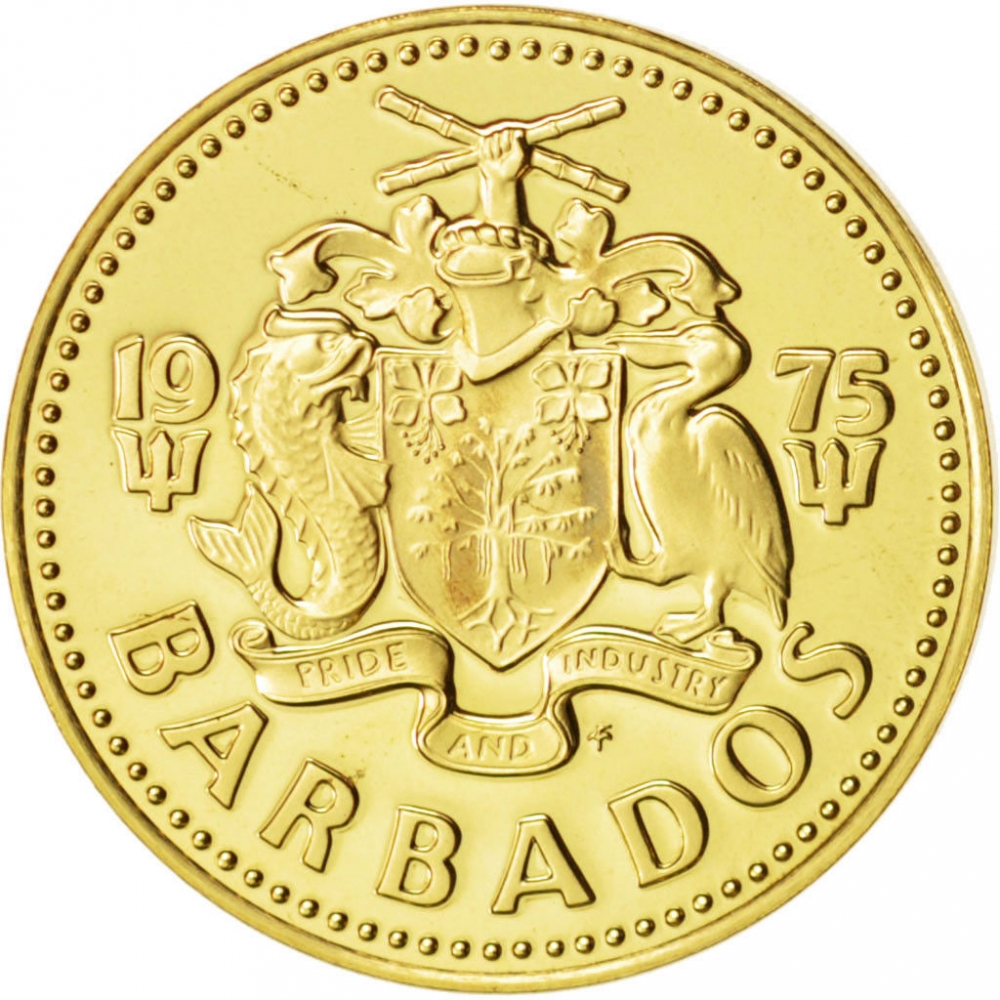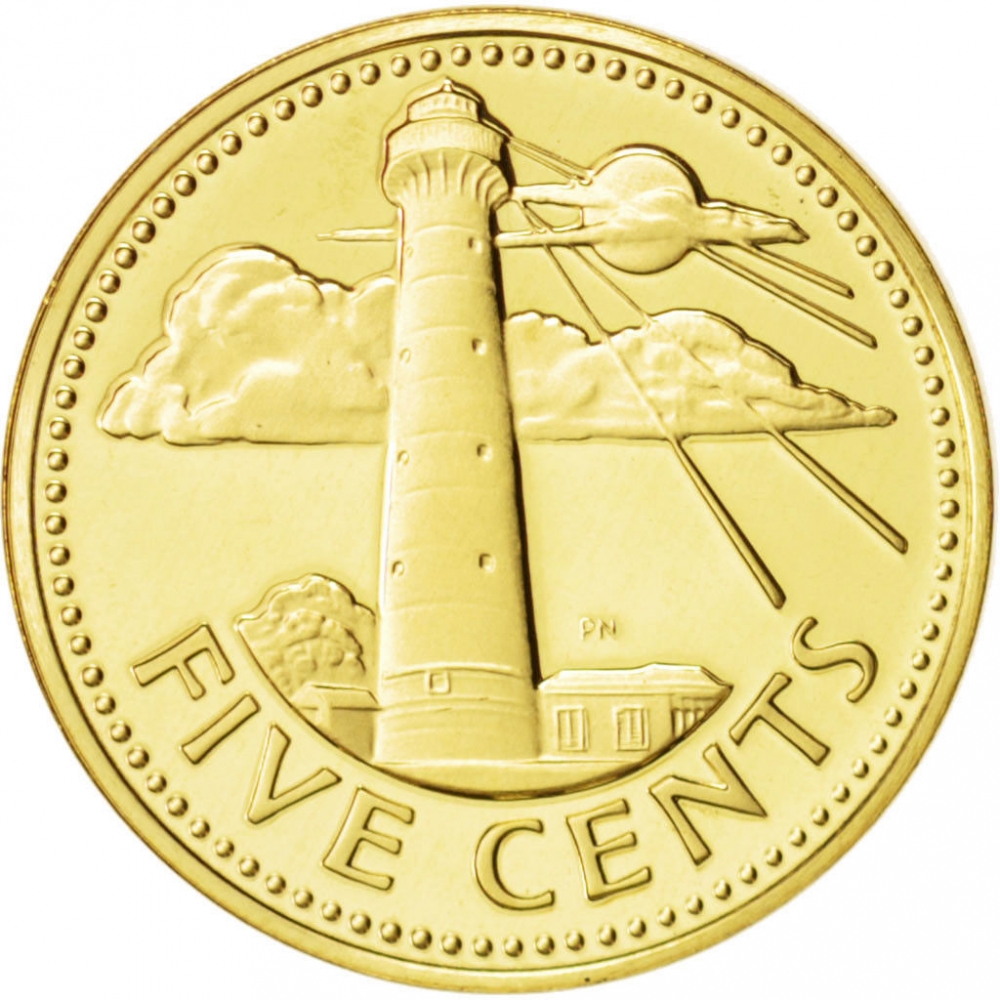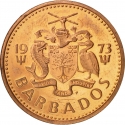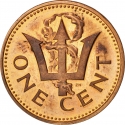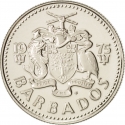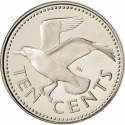Description
Engraver: Philip Nathan (PN)
Obverse

|
Depicts a coat of arms dividing date. Name of the country below.
The coat of arms of Barbados was adopted on 14 February 1966 by royal warrant of Queen Elizabeth II. Like other former British possessions in the Caribbean, the coat of arms has a helmet with a national symbol on top, and a shield beneath that is supported by two animals. The arms were designed by Neville Connell, for many years curator of the Barbados Museum, with artistic assistance by Hilda Ince.
The national symbol found on top of the helmet for Barbados is the fist of a Barbadian holding two stalks of sugar cane, that are crossed to resemble St. Andrew's Cross. This is representative of the importance of the sugar industry as well as Barbados celebrating its national independence day on St. Andrew's Day.
Upon the shield are a pair of the national flower, known as the Pride of Barbados, and a single bearded fig tree (Ficus citrifolia). The shield is supported by a dolphin fish and a pelican. They stand for the fishing industry and Pelican Island, respectively.
At the bottom is Barbados' national motto ("Pride and Industry") on a scroll.
19 73
PRIDE AND INDUSTRY
FM
BARBADOS
|
Reverse

|
South Point Lighthouse, value below.
It is the oldest lighthouse in Barbados. It was brought to Barbados in 1852, one year after being shown at London’s Great Exhibition, and reassembled on the southernmost point of the island. Although still listed as active, the lighthouse is now considered to be more of a national landmark and tourist attraction, with its grounds (but not tower) being made open to the public.
|
| Edge |
|
Characteristics
| Material |
Brass |
| Weight |
3.75 g |
| Diameter |
21 mm |
| Thickness |
1.67 mm |
| Shape |
 round
round
|
| Alignment |
Medal
|
| Mints |
Franklin Mint (FM) Royal Mint
|
Related coins
Heavy Version
Bronze, 3.11 g, ⌀ 19 mm
My Collection
My Exchange
Cupronickel, 2.29 g, ⌀ 17.77 mm
My Collection
My Exchange
Cupronickel, 5.67 g, ⌀ 23 mm
My Collection
My Exchange
|


